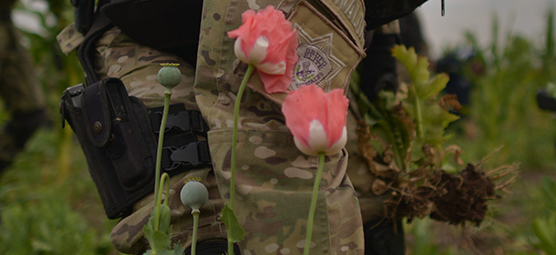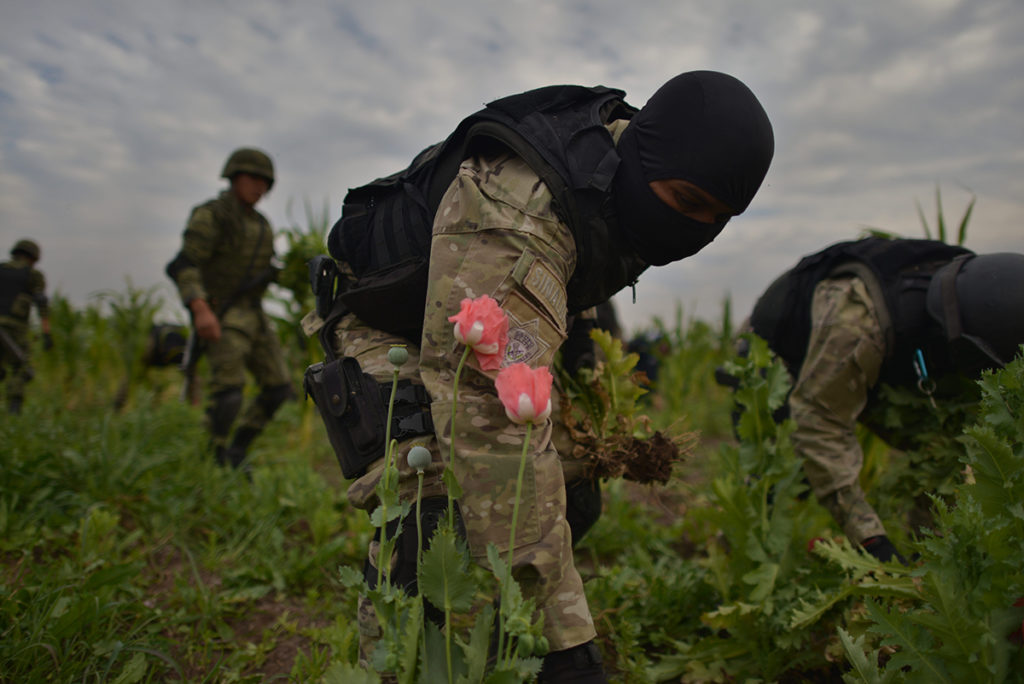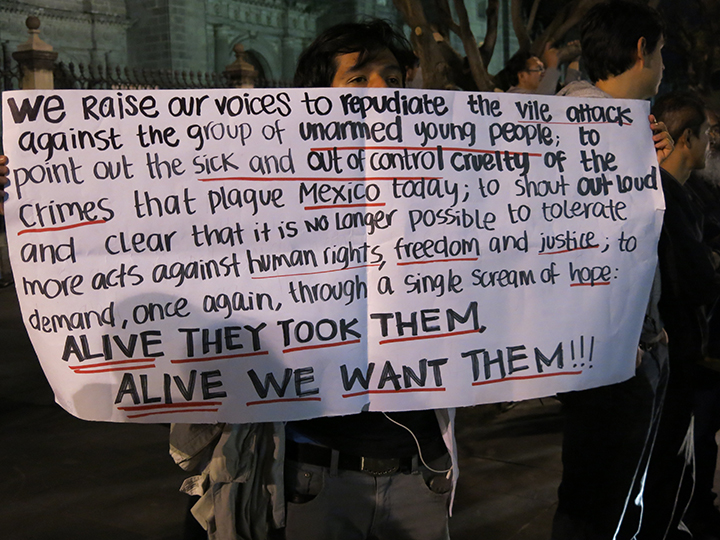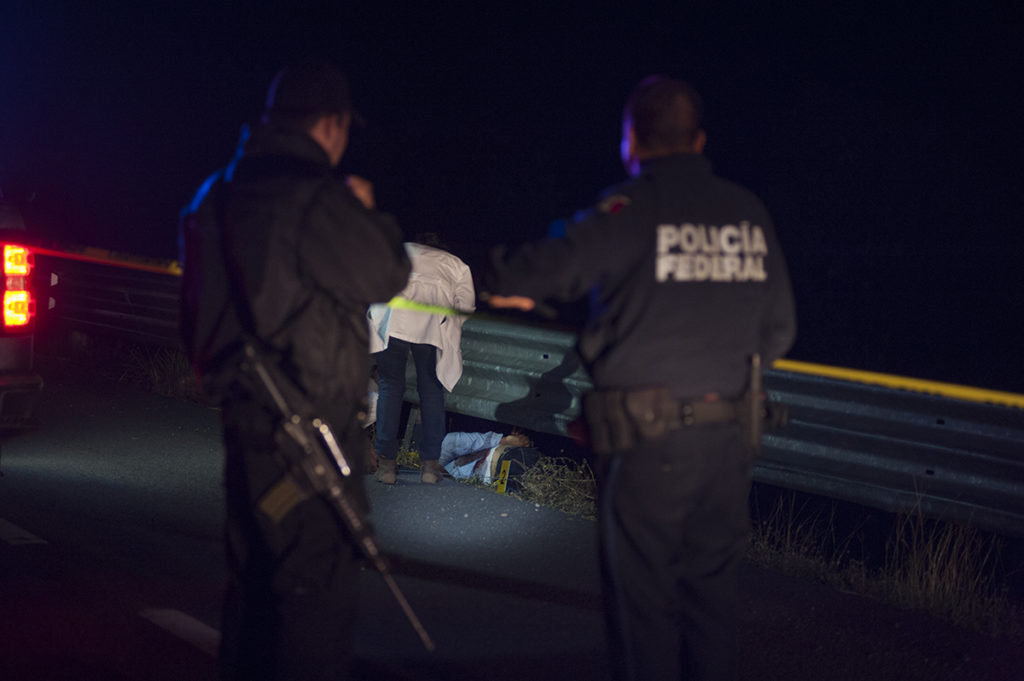Open now: Temporary photo exhibit depicting drug cartel violence in Mexico

Cartel Violence in Mexico

The Mob Museum is displaying a new, temporary exhibit depicting drug cartel violence in Mexico. The photos also show efforts by security forces and citizens to fight back.
“This exhibit is a reflection of our museum’s increasing attention to contemporary organized crime in all its forms,” said Geoff Schumacher, senior director of content. “Even as we tell the stories of how aggressive law enforcement brought down many traditional crime syndicates, we must document what organized crime looks and acts like in the 21st century. It is global in scope and just as nefarious as ever.”
Mexico has suffered from a decade of brutal violence. Most of it stems from drug cartels fighting security forces and each other over billion-dollar trafficking routes to smuggle cocaine, heroin, marijuana and crystal meth into the United States.
The Mexican government has waged a military offensive against the cartels for years but the violence has only gotten worse. Between 2007 and 2016, there were more than 176,000 murders in Mexico, according to police counts. 2017 is so far the most homicidal year since current counting methods began two decades ago. Government records also show that more than 30,000 people have disappeared across Mexico.
 As the violence rages, the cartels have expanded from drug trafficking to a larger portfolio of crimes. They control human smugglers, or coyotes, who take undocumented migrants into the United States, steal oil from pipelines, run wildcat iron mines, kidnap on industrial levels, and shake down thousands of businesses.
As the violence rages, the cartels have expanded from drug trafficking to a larger portfolio of crimes. They control human smugglers, or coyotes, who take undocumented migrants into the United States, steal oil from pipelines, run wildcat iron mines, kidnap on industrial levels, and shake down thousands of businesses.
In reaction to out-of-control crime, thousands of people in Mexico have taken up arms and formed vigilante militias, or autodefensas. However, some in the vigilante groups have themselves been accused of murder and other crimes.
Mexico’s security forces have also been accused of human rights abuses, including extrajudicial killings and torture. Mexico was shaken by the 2014 disappearance of 43 student teachers, who were last seen being abducted by the city police of Iguala. Federal prosecutors allege the police worked with a drug cartel to murder the victims, but the case was ongoing as of late 2017.
 More than 100 journalists have been murdered in Mexico since 2000, according to the press freedom group Article 19. On May 15, the journalist Javier Valdez was shot dead in his home city of Culiacan, triggering marches across Mexico for justice.
More than 100 journalists have been murdered in Mexico since 2000, according to the press freedom group Article 19. On May 15, the journalist Javier Valdez was shot dead in his home city of Culiacan, triggering marches across Mexico for justice.
The exhibit represents a small sampling of the work of two Mexico-based journalists, Fernando Brito and Ioan Grillo.
Fernando Brito, from Culiacan, Sinaloa, is an award-winning photojournalist who has documented drug cartel violence for newspapers and photo exhibitions since 2004.
Ioan Grillo, a native of England, is a freelance journalist based in Mexico City. He is the author of Gangster Warlords: Drug Dollars, Killing Fields and the New Politics of Latin America (2016) and El Narco: Inside Mexico’s Criminal Insurgency (2011).





